ArcUser
Fall 2011 Edition
Transparent Communication Keeps Contributions Coming
By Karen Richardson, Esri Writer
This article as a PDF.
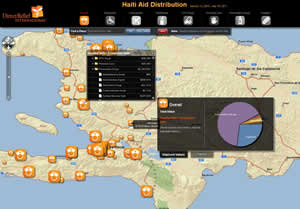
Anyone visiting the DRI website can explore details about shipments to Haiti.
GIS web apps keep donations coming into Direct Relief International (DRI) by constantly apprising donors of how their contributions are being spent.
Nonprofit organizations like Santa Barbara, California-based DRI rely on the charity of individuals, businesses, and foundations to operate. DRI collects and distributes medical supplies and pharmaceuticals to 72 countries, including the United States. The organization provides medicines and medical supplies for those who otherwise can't afford them because they are low-income and don't have health insurance or live in developing countries that lack the infrastructure to provide basic health services. In addition to partnering with licensed health care providers to deliver reliable medical services throughout the world, DRI also responds to crises such as the 2010 Haiti earthquake.
The earthquake in Haiti killed or injured hundreds of thousands of people and displaced more than a million. DRI relied on generous donations from individuals and corporations to reach out to help those suffering. "Unlike some nonprofits, DRI does not use US government funding or grants for the services we provide. We rely solely on charitable contributions," explained Andrew Schroeder, director of research and analysis for DRI.
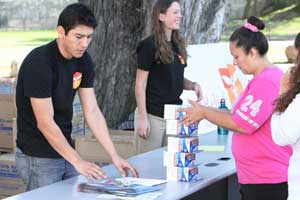
Current and prospective donors can visit an interactive map of Haiti to ensure that contributions are being put to good use. The map, located on DRI's website, allows anyone to explore details about DRI's shipments to the country based on the location and type of medical supplies required. Pie charts provide a visual breakdown of the composition of medical donations (e.g., prescription drugs, instruments) matched with their associated costs.
As new donations arrive in Haiti, DRI's website tracks supplies, needs, and working partners. "It's important that our donors and others, such as the public and news media, see that we are able to deliver essential supplies in the right amounts, forms, strengths, and dosages to the facilities that need them," said Schroeder. "If they see their money is being well spent, we have a better chance of retaining donors and attracting new ones."
In the six months following the Haiti quake, DRI provided more than 400 tons of emergency medical assistance worth approximately $57 million to 53 Haitian health care facilities, international medical teams, mobile medical clinics, tent-based hospitals, and medical units at camps for displaced people across the country. The ability to raise the substantial funding needed for these medical supplies is substantially aided by what Schroeder described as "transparency and communication."
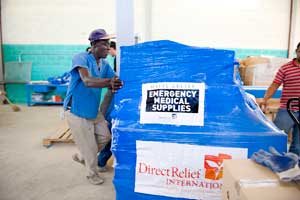
DRI provides a similar map for contributions at work in the United States. It contains information on the amounts and types of donations provided to more than 1,100 nonprofit clinics throughout the 50 states. The map of clinic locations can display donations nationwide or by state or individual clinic. Icon size indicates the amount of medical aid a clinic receives. Users can view individual states by choosing from a drop-down and seeing aggregated statewide aid totals, zooming in to a specific area, or typing in an address.
Schroeder and his team use ArcGIS for Server to manage the geospatial aspects of US and international inventory that is tracked by the organization in SAP. Microsoft SQL Server is a bridge to inventory files that are exported from SAP in Microsoft Excel and DBF format files and imported into ArcGIS for Server applications via a multiuser geodatabase. Multiple mapping applications created with ArcGIS API for Flex are available to the general public (like the Haiti and United States clinic maps), and others are used internally at DRI. These solutions were built with the assistance of researchers in the Department of Geography at the University of California, Santa Barbara.
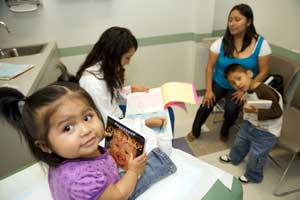
In addition to showing donors where their money is being spent, DRI must constantly find new donors. Fund-raising is a necessary part of DRI's operations. The organization received more than $341 million in total public support, including cash and in-kind donations. DRI spent less than one-half of 1 percent of this total on its fund-raising efforts. DRI's efficiency and expense ratings are consistently among the best in the United States, and it was rated as 100 percent efficient in fund-raising for the eighth time in 2010 by Forbes magazine. [Fund-raising efficiency is based on charitable commitment, and donor dependency.] Maintaining this efficiency is important to the organization, and it is always looking for better ways of finding donors to bring necessary medical supplies to the people who need them around the world. "As a lean nonprofit, we can't spend a lot of money on a market research firm to help us find donors," said Schroeder, "so we need much better tools and intelligence internal to our organization."
DRI is looking forward to implementing Esri's Software as a Service (SaaS) product Community Analyst as a cost-efficient solution to help target potential donors in the United States. "Fund-raising is a tough nut to crack," said Schroeder. "By understanding our existing donors and finding more like them, we can attract a substantial and sustainable significant donor base. We'll be more able to think strategically about how to raise resources."
Community Analyst will allow staff at DRI to look at profiles of donors at smaller scales of geography, such as census block groups, and find out more specifically where new donors might be located. This helps target marketing and outreach campaigns, ensure that less money is spent on fund-raising, and allow more money to go toward serving the needs of vulnerable populations.
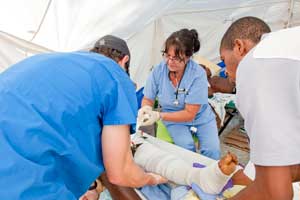
DRI collects and distributes medical supplies and pharmaceuticals to 72 countries and partners with licensed health care providers to deliver reliable medical services throughout the world. (Photos courtesy of DRI)
This solution may help DRI as it provides aid to people affected by other crisis situations such as the drought and resultant famine spreading across the Horn of Africa. Coordinating with a group of Kenya-based nongovernmental organizations and the Kenyan Red Cross, DRI is working to fill the gap in essential medical supplies for people in northern and eastern Kenya, including tens of thousands of famished Somalis who have been pouring across the border in search of food. While the amount of food aid being brought into the area is increasing rapidly, there is a persistent gap in essential medical services that DRI is working to fill.
There is also a significant gap in financial contributions for this crisis, so DRI is allocating an initial $50,000 from reserve funds to obtain and distribute essential medications and supplies in response to specific needs identified in the camps and settlements in and around Turkana, in northwestern Kenya near the Ethiopian border. With a little luck, and the right map, DRI may find the people needed to bring medical supplies to this desperate community.
DRI works hard to bring health to vulnerable populations around the world. Being healthy is the first building block of breaking the cycle of poverty. If children are sick, they don't attend school and can't learn skills. If adults are sick, they can't work for a living and provide for their families. While eradicating poverty is an extremely complex challenge, better access to reliable health services is necessary to create a positive change and increase livelihoods and enhance economic development.
DRI continues to look at the next generation of information technology to bring better understanding of information in the organization. Creating a community for providers, donors, and the public through mapping applications is one powerful way it has found to bring assistance to those who need it.